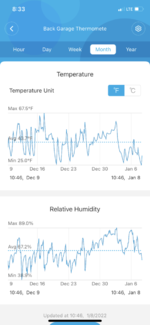Here, I feel like the "straw man" is "pathogens".
It leads to the question, why are these pathogens present in the first place and where do they come from?
I don't feel as if that's a straw man, or a cloak or whatever. The discussion lead to summer repotting - which to me is a diversion that was uncalled for but I'm willing to bite - of which I'm not a fan and I can defend my standpoint with solid arguments. Mostly due to the seasonal hormonal influx being absent in summer, secondary because the summer is a harsh condition to be growing roots due to limited water and high temperatures and third because of pathogens. Pathogens are present because that's what they do: they reside, they lay dormant, they wait and strike when they can. We get pollen from Morrocco blowing over, Sahara sand too! In the middle of Europe. Spores are a thousand times lighter, they can and will travel and they are omnipresent.
To strike effectively, there's a general set of rules that needs to be met: conditions have to be alright (temperature and humidity), nutrient availability, they need a plant that doesn't have defenses against them (susceptibility), and they need a point of entry (vector or contact). That's the rule for athlete's foot as much as it is for any plant pathogen.
We all know these pathogens are everywhere and a single day of bad conditions can cause them to flourish. And in the summer, there are just more of those days. So let's circle back to summer repotting: our trees have been soaking in cow, chicken, pork dung and dead fish or kelp for months now. Temperatures are optimal for pathogen growth - but also the good guys, mind you! Pathogens are actively spreading at this time too, summer is their peak season. Plants have just spent their energy towards spring growth and they're in a net negative state. Perfect time to strike for pathogens. I'm absolutely certain that I'm partially responsible for my plants dying after a summer repot. No reason to deny that. But a larger, way larger part has to do with conditions.
You'd argue that trees are weakened by the repotting in spring. Something I have yet to observe. But that argument only holds ground
if they are in fact weakened by spring repotting. Now let's say that's true, for the sake of the argument.. It wouldn't make sense to be repotting that same tree in summer, would it? When it comes to discussing things right, we should steer away from "If.. Then.." types of reasoning. It obscures the matter at hand.
Let's go back to spring. Temperatures are low, plants are active because they have a bunch of sugars and starches and can resist low temperatures. Pathogens cannot, they rely on external exposure to nutrients, which we also have just moderately dosed. Pathogens are not spreading at this time, yet. And if they do, conditions for them aren't optimal; temps too low. Plant sap is still filled with gunk from winter, like sugars, which also act as a natural antibiotic to most fungi and bacteria. On top of that, science has proven time after time again that high levels of hormones cause plants to heal faster. We see this reflected in growth.. You can observe this in two seasons specifically: spring and fall.
We can now fully circle back to bud swelling. Bud swelling, and other signs - like smells, like ants, like birds - are hormone based. The plants have their eyes set on the prize, they start producing those hormones triggered by temperatures, daytime length, and other seasonal things (and also internal clocks that just trigger stuff even when it's too soon). I'm very much convinced, and I can prove it scientifically because I have a freezer full of plant hormone stocks, that hormone production isn't stopped by a freeze or two. As a matter of fact, low temperatures stabilize hormones and stop degradation. Even if the icy depths are reached, the amount of sugar inside the plant does provide protection. The heightened turgor pressure that causes the buds to initially swell, pushes things outwards instead of inwards.
I do believe bud swell alone is a bad indicator and I fully agree with you on the cloaking; if we fake it, the plant will believe that it's spring while it isn't. But slapping people because they don't mention the whole story is kind of harsh, don't ya think? Because there's the other factor.. The "but if.. Then.."
But if we're faking spring convincingly and the plant falls for it, why would a repot be bad? I mean,
if we're providing spring conditions..
Then how hard is it to continue in that fashion and keep providing these conditions?
I know that's not how it works. So I'm using it as a conclusion instead of an argument.
@Gr8tfuldad its safe to assume that I repot when most frost risks have passed. I don't mind a couple degrees C below zero because of the excess sugars. We usually get a serious dip around Feb and after that it's only minor frosts. My plants have been unprotected for 4 years now, maybe 5 or more, so they don't move until they think it's the right time and I don't move until I have to because I'm just a lazy dude with a garden hose. My philosophy about cover and winter protection is quite simple: if I don't have to move them now, I don't have to move them when I'm 40, or 50, or 60 years old. And the plants will only get bigger in that period. Everything that dies now, is something I don't have to drag indoors for the next 30 years.
 Thank you!!!
Thank you!!!

